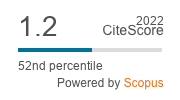Dando voz y protagonismo a la infancia en los procesos de investigación e innovación educativos
Palabras clave:
infancia, investigación educativa, métodos participativos, enfoque mosaico/ Childhood, educational research, participatory methods, mosaic approachResumen
Hasta el momento, la investigación educativa ha silenciado en gran medida la perspectiva de la infancia, recogiendo exclusivamente la visión del adulto en relación a una realidad educativa vivida y experimentada por el niño y de la que éste es el principal protagonista. Considerar la “mirada” infantil ayuda a reducir el sesgo, bastante recurrente, otorgado por la perspectiva adulta que tiende extrapolar las experiencias educativas vividas durante su infancia, anulando el conocimiento real de las necesidades y demandas del niño.
Este trabajo muestra las posibilidades y beneficios que se desprenden de escuchar la voz infantil en la investigación educativa, realizando un análisis del rol que el niño puede desempeñar. Se plantean los recursos que facilitan la participación de la infancia en la investigación educativa teniendo en cuenta que se trata de un campo escasamente desarrollado en el territorio nacional y que presenta grandes desafíos en su implementación. En él se apuntan los retos y las posibilidades que se constatan y vislumbran en este enfoque de cara a la mejora de los procesos educativos En la medida en que se facilite la identificación de las necesidades reales percibidas por el niño en todos aquellos temas que le afectan y no acudamos sólo a lo que piensa el adulto que necesita la infancia, estaremos contribuyendo de forma activa a la mejora de la calidad de nuestros procesos educativos.
Abstract
Until now, children´s perspective has been silenced by educational research, which has focused exclusively on an adults´ vision on the educational experience lived and experienced by children and in which they are the main characters. Considering children´s view helps to reduce the recurrent bias of adults, who tend to extrapolate educational experiences lived in their childhood and do not to realize children´s real needs and demands. This research points out the possibilities and benefits of listening to children in educational research, analyzing the role played by children. The resources that facilitate the participation of children in educational research are set out taking into account that it is a scarcely developed field in the national territory, whose implementation involves enormous challenges. The research points out the challenges and possibilities that are confirmed and discerned in this approach in order to improve educational processes. It permits to identify the real needs perceived by ¡ children in topics that affect them; when we go beyond what adults think about children’s needs, we start to contribute actively to improve the quality of our educational processes.
Descargas
Citas
ALDERSON, P. (1995). Listening to Children: Children, Ethics and Social Research. London: Barnardo's.
ARGOS, J., , CASTRO, A., & EZQUERRA, M. P.(2009). Repensando la práctica pedagógica de nuestras escuelas: algunos vectores potencialmente revilitadores. En J. HERNÁNDEZ, S. MOLINA, & M.
INDA (EDS.), La escuela hoy. La Teoría de la Educación en el proceso colectivo de construcción del conocimiento (págs. 161-171). Oviedo: Universidad de Oviedo.
BAUMAN, Z. (2007). Los retos de la educación en la modernidad líquida. Barcelona: Gedisa.
BAUMAN, Z. (2005). Modernidad líquida. Argentina: Fondo de Cultura Económica.
BORZONE, A., & ROSEMBERG, C. (2000). ¿Qué aprenden los niños cuando aprenden a hablar?. El desarrollo lingüístico y cognitivo en los primeros años. Buenos Aires: Aique.
BOURDILLON, M. (2004). Children in development. Progress in Development Studies, Vol. 4 ,(2): 99-113.
BRUNER, J. (1996). The culture of education. Cambridge: MA: Harvard University Press.
BURKE, C. (2005). "Play in Focus": Children Researching their Own Spaces and Places for Place. Children, Youth, Environments, 15(1):27-53.
CHRISTENSEN, P., & JAMES, A. (2000). Childhood Diversity and Commonality: Some Methodological Insights. En P. CHRISTENSEN, &
A. JAMES (EDS.), Research with Children. Perspectives and Practices (págs. 160-179). London.
CHRISTENSEN, P., & PROUT, A. (2002). Working with Ethical Symmetry in Social Research with Children. Childhood , Vol. 9 (4): 477-497.
CLARK, A., & MOSS, P. (2001). Listening to Young Children: The Mosaic Approach. London: National Children’s Bureau and Rowntree Foundation.
COCKS, A. (2006). The ethical maze. Finding an inclusive path towards gaining children's agreement to research participation. Childhood , Vol 13(2):247-266.
CORSARO, W.A., & MOLINORI, L. (2000). Entering and observing in children's worlds: a reflection on a longitudinal ethnography of early education in Italy. En P. CHRISTENSEN, & A. JAMES (EDS.), Research with children. Perspectives and Practices (págs. 179-201). London: Falmer Press.
DALHBERG, G., MOSS, P., & PENCE, A. (1999). Beyond Quality in Early Childhood Education and Care: Postmodern Perspectives. London and Philadelphia : PA: Falmer Press.
DOCKETT, S., & PERRY, B. (2005). Starting school in Australia is a "bit safer, a lot easier and more relaxing": Issues for parents from culturally and linguistically diverse backgrounds. Early Years , 25(3), 271 - 281.
FASOLI, L. (2003). Reading Photographs of Young Children: looking at practices. Contemporary Issues in Early Childhood, 4(1) , 32-47.
GALLACHER, L.-A., & GALLAGHER, M. (2008). Methodological immaturity in childhood research?. Thinking through "participatory methods". Childhood , Vol 15(4):499-516.
JAMES, A., & PROUT, A. (1990). Constructing and Reconstructing Childhood. Contemporary Issues in the Sociological Study of Childhood. London : Falmer Press.
LANCASTER, Y., & BROADBENT, V. (2003). Listening to Young Children. Maidenhead: Open University Press.
LEWIS, A., & LINDSAY, G. (2000). Researching Children's Perspectives. Buckingham: Open University Press.
LLOYD-SMITH, M., & TARR, J. (2000). Researching Children's Perspectives: A sociological dimension. En A. LEWIS, & G. LINDSEY, Researching Children's Perspectives (págs. 59-70). Buckingham: Open University Press.
MAYALL, B. (2000). Conversations with children: working with generational issues. En P. Christensen, & A. James, Advocating for children: International Perspectives on Children's Rights (págs. 120-135). London: Falmer.
O'KANE, C. (2000). The Development of Participatory Techniques: Facilitating Children's Views about Decisions which Affect Them. En P. CHRISTENSEN, & J. ALLISON (EDS.), Research with Children. Perspectives and practices (págs. 160-179). London: Falmer Press.
POWELL, M., & SMITH, A. (2009). Children's Participation Rights in Research. Childhood, Vol 16(1): 124-142.
PRAMLING, I. (2004). How do children tell us about their childhood. Early Childhood Research and Practice, Vol 6(1), 1-15.
PROSSER, J. (2003). Image - based Research. A Sourcebook for Qualitative Researchers. London & New York: Routledge Falmer.
PROUT, A Y JAMES, A. (1990): A New Paradigm for the Sociology of Childhood? Provenance, Promise and Problem, en A. Prout y A. James (eds.): Constructing and Reconstructing Childhood. Londres: Falmer, pp. 7-31.
PROUT, A. (2002). Researching children as social actors: An introduction to the children 5 -16 programme. Children & Society, 67 -76.
PUNCH, S. (2002). Research with children. The same or different from research with adults? Childhood, Vol. 9 (3): 321-341.
RINALDI, C. (2001). A pedagogy of listening: a perspective of listening from Reggio Emilia. Children in Europe, Vol 1: 2 - 5.
ROBERTS, H. (2000). Listening to Children: and Hearing Them. En P. CHRISTENSEN, & A. JAMES (EDS.), Research with Children: Perspectives and Practices (págs. 225 - 240). London: Falmer Press.
ROBERTSON, J. (2000). Drawing: Making thinking visible. In W. Schiller (Ed.), Thinking through the arts (pp. 154-162). Amsterdam: Harwood Academic Publishers.
SAYEED, Z., & GUERIN, E. (2000). Early Years Play: A Happy Medium for Assessment and Intervention. London: Fulton.
YOUNG, L.C. & BARRETT, H.R. (2001). Issues of access and identity: adapting research methods with Kampala street children. International Journal of Childhood, 8, (3) pp. 383-395.
Descargas
Publicado
Cómo citar
Número
Sección
Licencia
Revista Fuentes brinda acceso abierto inmediato a todo su contenido sobre el principio de que hacer que la investigación esté disponible de forma gratuita para el público para apoyar un mayor intercambio global del conocimiento.
De esta manera, el lector puede acceder a todos los contenidos de la revista desde el momento de la publicación sin coste ni obligación de suscripción.
Salvo indicación contraria, los artículos publicados en Revista Fuentes tienen licencia bajo el acuerdo de licencia internacional Attribution-NonCommercial-ShareAlike 4.0 International (CC BY-NC-SA 4.0). Los autores retienen los derechos de autor y se permite a terceros copiar, distribuir y hacer uso de los trabajos siempre que cumplan con los términos y condiciones establecidos por dicha licencia
- citar la autoría y la fuente original de su publicación (revista, editorial y URL de la obra).
- No se usen para fines comerciales.
- Si remezcla, transforma o crea a partir del material, deberá difundir sus contribuciones bajo la misma licencia que el original.
Puede encontrar más información al respecto en https://creativecommons.org/licenses/by-nc-sa/4.0/deed.es.
En el caso de trabajos publicados bajo una licencia diferente a la anteriormente mencionada (CC BY-NC-ND o CC BY-NC) los autores retienen los derechos de autor, permitiéndose su copia, distribución y uso de los trabajos siempre que cumplan con los términos y condiciones de la licencia correspondiente. Puede encontrar más información al respecto en https://creativecommons.org/licenses/?lang=es.










